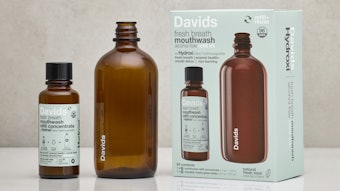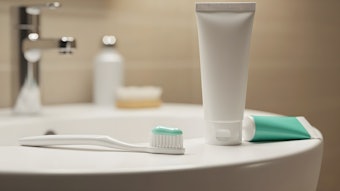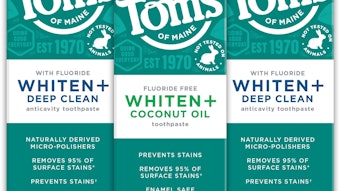
In a majority of consumer markets around the world, oral care products are viewed as a daily necessity. Oral care routines have become, for the most part, the first thing we do when we wake up and the last thing we do before we go to sleep. The functional aspect of an oral care product is widely accepted with a plethora of oral health-related claims seen across all geographic regions. Claims from the widely accepted position of “prevents tooth decay,” to “sensitivity relief” to even “anti-aging” claims. In general, consumers accept the fact that oral care products have clear health benefits.
One claim that I have never seen made on the packaging of an oral care product is “improves confidence,” and yet when we look beyond the obvious functionality of toothpaste and mouthwash, confidence is a clear benefit of a regular oral care routine. Leaving the mouth with a fresh taste and clean feeling is a critical component of any oral care product. It is this efficacy cue which is so desirable to consumers that results in flavor profiles centered around mint and mint derivatives.
It is this emotional desire for freshness rather than a desire for mint that in reality defines oral care flavors, which in turn creates a huge challenge to the flavorist. In other areas of flavor creation, with the possible exception of some areas of savory flavor creation where the magical “umami” can prove to be the missing ingredient, the target being sought is clear. Flavors like vanilla, strawberry and passion fruit are, too all intents and purposes, easy to define for the majority of people. In fact, on the whole, the target for a flavorist is pretty definable in the vast majority of flavor and product combinations. In oral care however, the target is very rarely that easy to define.
Flavoring Confidence?
Work from Takasago’s Global Consumer Insights & Market Research Team (CIMR) has shown that consumers in all regions when asked, how they feel after brushing their teeth rarely respond describing the flavor they have just tasted. Overwhelmingly, the responses include “clean,” “refreshed” and “fresh breath.” Increasingly “confident” is also being used to describe the feeling after brushing or rinsing with mouthwash. There is very little if any mention of the flavor profile itself, or of the physical attributes of the flavor. Instead, the consumer is looking for the intangible benefits that the product flavor brings. Now, spare a thought then for the oral care flavorist. They have to create something which, as well as negotiating all the formulation challenges of active ingredients, oral care bases, have to create something that results in a flavor which isn’t “peppermint” but is “clean, fresh and gives confidence.” I’ve tried many times, but I’ve yet to find a bottle of “confidence” on any shelf in the grocery store that I could analyze by GC/MS to give me a starting point in for flavor creation.
The reason behind all of this of course is the tangible link between fresh breath and the efficacy of an oral care product. Clearly, if the taste during and after brushing or rinsing gives the feeling of clean then your mouth is clean, and the product is working. It is interesting that, despite this, claims on oral care products still focus on the functional. A study performed by Takasago’s Global CIMR team has led to a similar conclusion. In a global Ide@Screenb study covering 12 countries across all regions, 400 consumers per country, aged between 15 and 65 years old, were asked to choose what are important desired attributes from 29 different claims taken from oral care packaging products and consumer interviews. Of these 29 claims only four were related to oral malodor. The remaining claims were more functional claims.
In 11 of the 12 countries, two of the top five claims chosen by respondents were directly related to fresh breath. Interestingly, across Europe and North America the most desired benefit was “cavity fighting,” but in some of the key Asian markets such as China, Indonesia, South Korea and Thailand, the key desired benefit was related to oral malodor such as “breath freshening” and “eliminate bad breath.” In fact, of the four claims listed linked to oral malodor only one which directly relates to bad breath was not in the top 10 desired attributes. That this was “removes bacteria which causes bad breath” could indicate that consumers still do not understand that there is a strong link between bacteria in the oral microbiome and bad breath.











